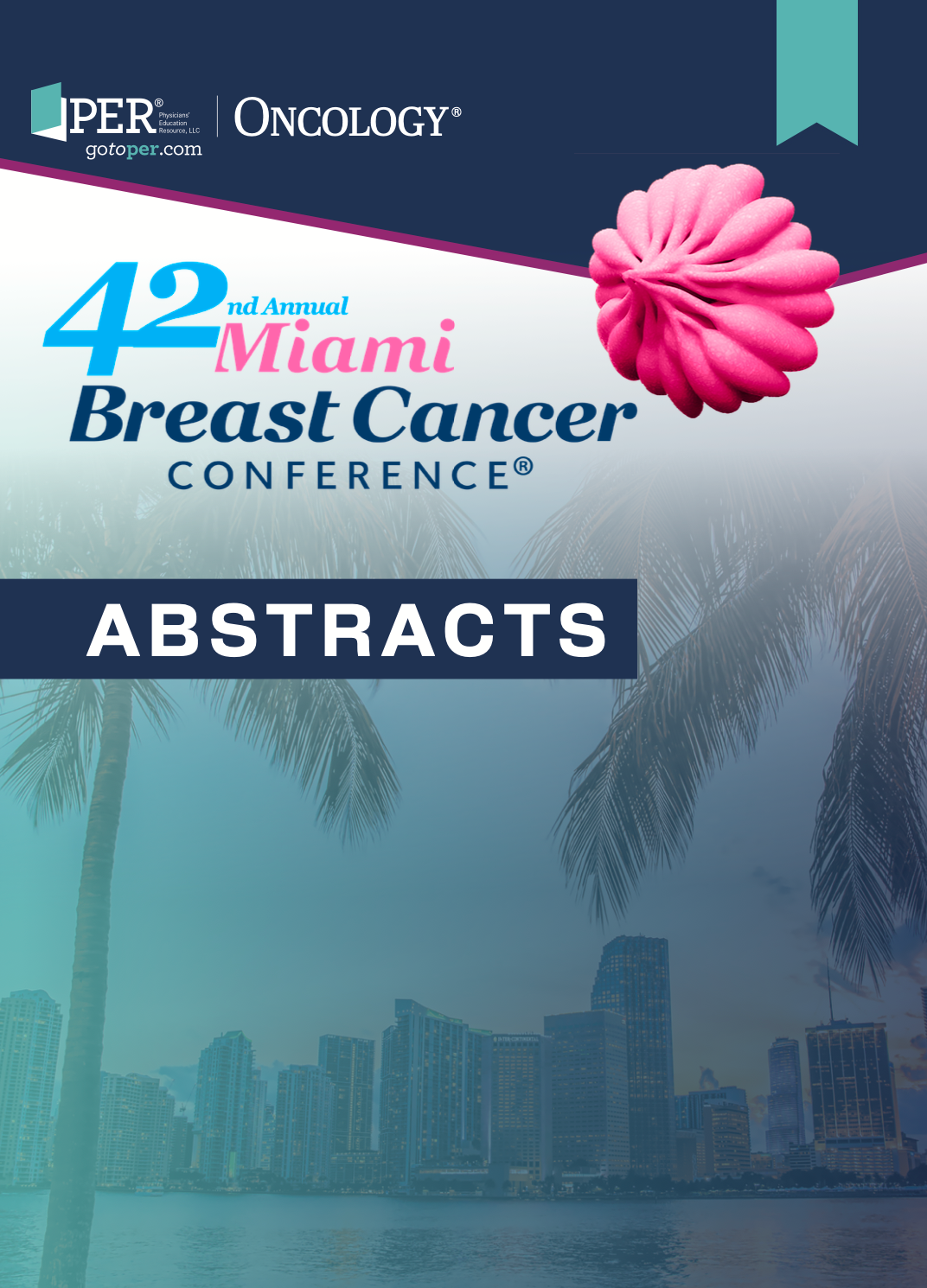46 Neoadjuvant Pembrolizumab or Placebo Plus Chemotherapy Followed by Adjuvant Pembrolizumab or Placebo for High-Risk, Early-Stage Triple-Negative Breast Cancer: Overall Survival and Subgroup Results From the Phase 3 KEYNOTE-522 Study
Peter A. Fasching
- Rebecca Dent, MD
- Javier Cortés, MD
- Lajos Pusztai, MD, DPhil
- Sherko Kuemmel
- Carsten Denkert
- Yeon Hee Park
- Rina Hui
- Nadia Harbeck, MD, PhD
- Masato Takahashi
- Seock-Ah Im
- Michael Untch, MD, PhD
- Marie-Ange Mouret-Reynier
- Theodoros Foukakis
- Marta Ferreira
- Fatima Cardoso
- Yu Ding
- Cecilia Pinheiro
- Jaime Mejia
- Joyce A. O’Shaughnessy
- Peter Schmid, MD
46 Neoadjuvant Pembrolizumab or Placebo Plus Chemotherapy Followed by Adjuvant Pembrolizumab or Placebo for High-Risk, Early-Stage Triple-Negative Breast Cancer: Overall Survival and Subgroup Results From the Phase 3 KEYNOTE-522 Study

Background
In the phase 3 KEYNOTE-522 (NCT03036488), neoadjuvant pembrolizumab plus chemotherapy followed by adjuvant pembrolizumab significantly improved pathological complete response and event-free survival (primary end points) vs neoadjuvant placebo plus chemotherapy followed by adjuvant placebo in patients with high-risk, early-stage triple-negative breast cancer (TNBC). At the prespecified analysis of overall survival (OS; secondary end point; data cutoff, March 22, 2024), the HR favored pembrolizumab (0.66; 95% CI, 0.50-0.87; P = .0015, crossing the prespecified significance boundary of 0.00503). We present OS results in prespecified subgroups based on residual cancer burden (RCB) and post hoc OS analyses in patients with baseline T2N0 disease.
Materials and Methods
Eligible patients with previously untreated, nonmetastatic, centrally confirmed TNBC (stage T1c N1-2 or T2-4 N0-2 per AJCC) were randomized 2:1 to neoadjuvant pembrolizumab at 200 mg every 3 weeks or placebo plus 4 cycles of paclitaxel plus carboplatin, followed by 4 cycles of doxorubicin or epirubicin plus cyclophosphamide. After definitive surgery, patients received adjuvant pembrolizumab or placebo for 9 cycles or until recurrence or unacceptable toxicity. The Kaplan-Meier method was used to estimate the subgroups for OS. HRs (95% CIs) for OS subgroups were based on the Cox regression model with the Efron method of tie handling with treatment as a covariate. RCB was assessed by the local pathologist at the time of definitive surgery.
Results
1174 patients were randomized to pembro (n = 784) or placebo (n = 390). At the data cutoff for OS (March 22, 2024), median follow-up was 75.1 months (range, 65.9-84.0). Data are shown in the Table. RCB rates were 63.5% with pembrolizumab vs 56.2% with placebo for RCB-0, 8.8% vs 11.5% for RCB-1, 18.4% vs 20.3% for RCB-2, and 5.1% vs 6.7% for RCB-3. At 5 years, OS rates (95% CIs) in patients with baseline T2N0 disease were 93.3% (89.9%-95.6%) with pembrolizumab vs 89.2% (83.2%-93.1%) with placebo. OS in subgroups based on PD-L1 expression will also be presented.
Conclusion
In patients with high-risk, early-stage TNBC, neoadjuvant pembrolizumab plus chemotherapy followed by adjuvant pembrolizumab showed clinically meaningful improvements in OS vs neoadjuvant chemotherapy alone, with the highest OS benefit observed in patients with the least RCB.
